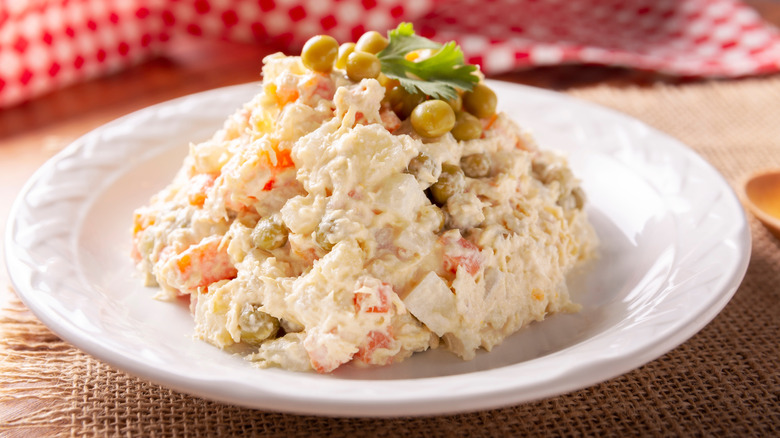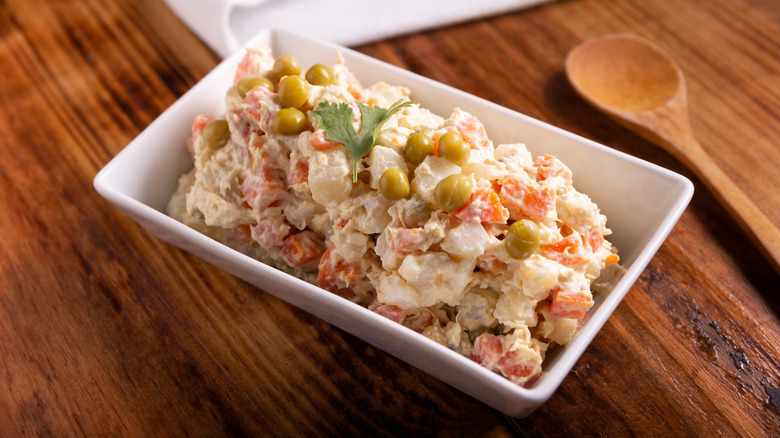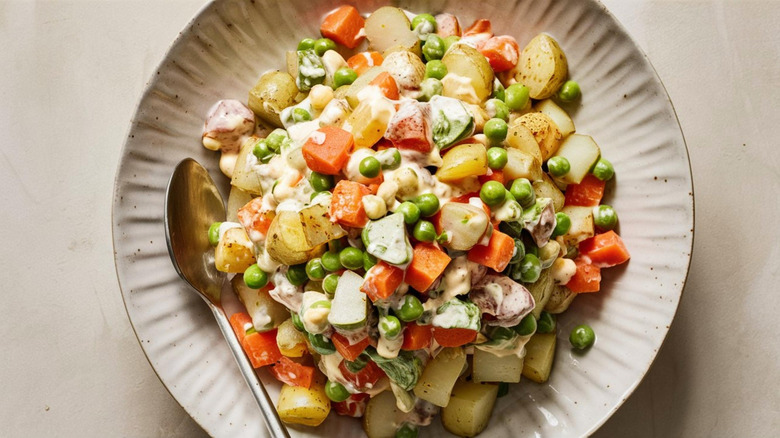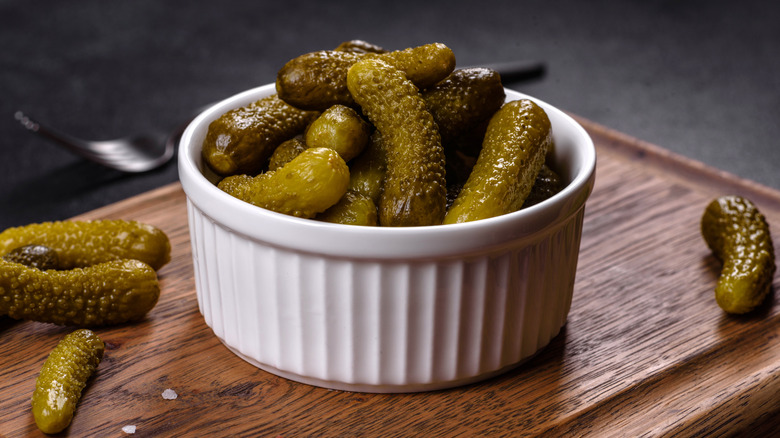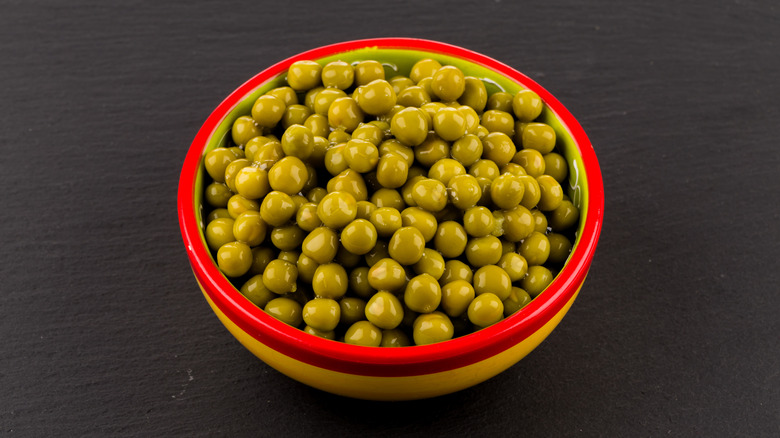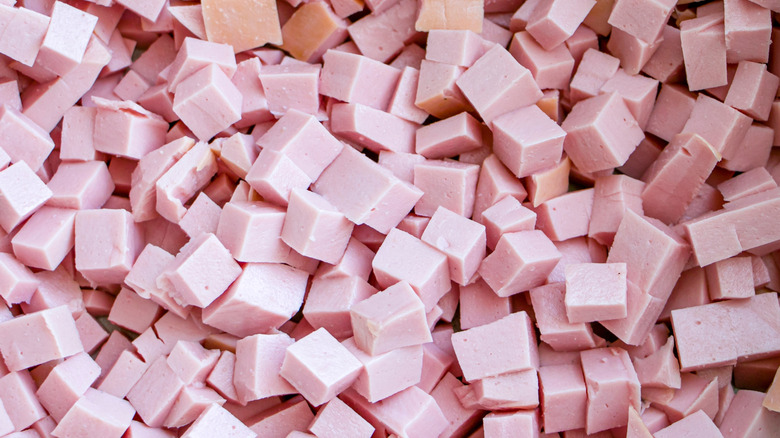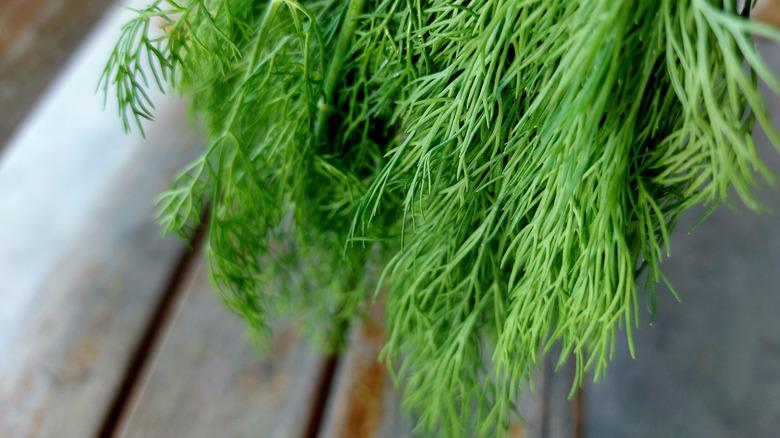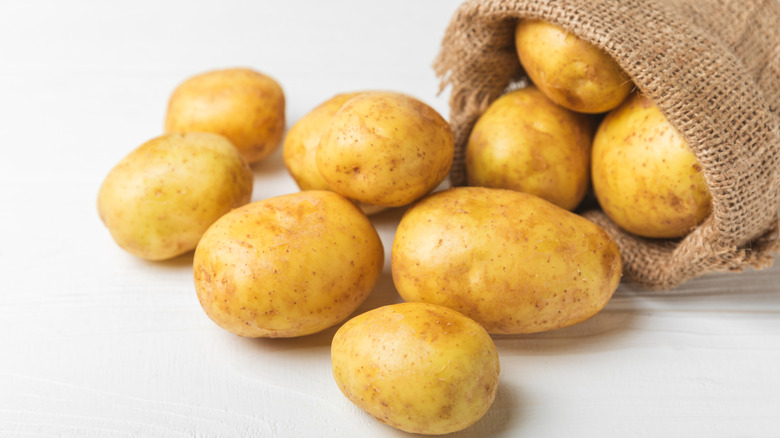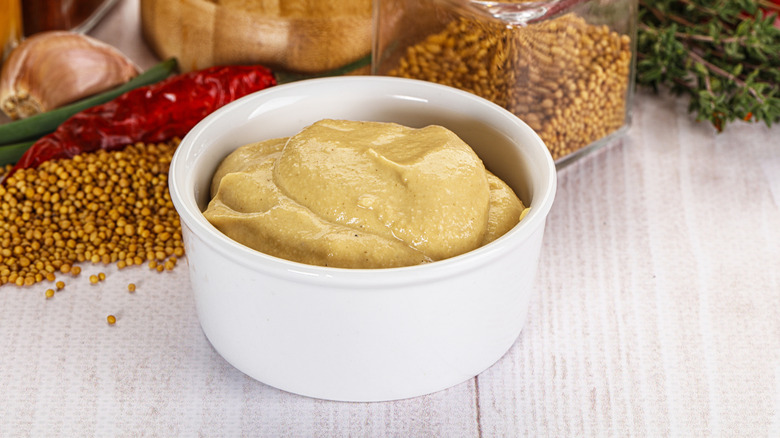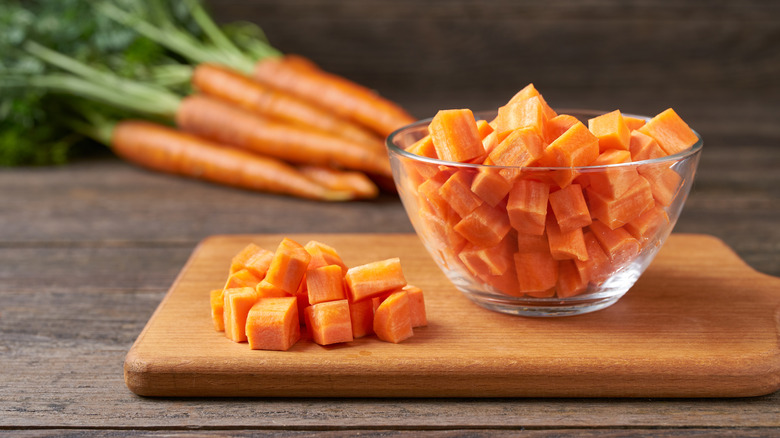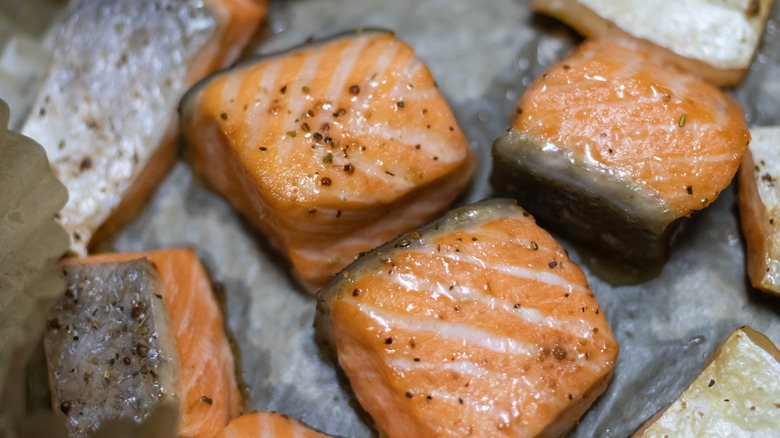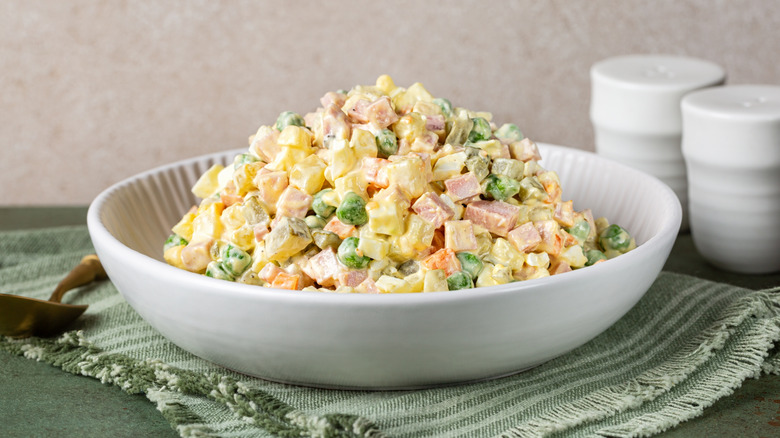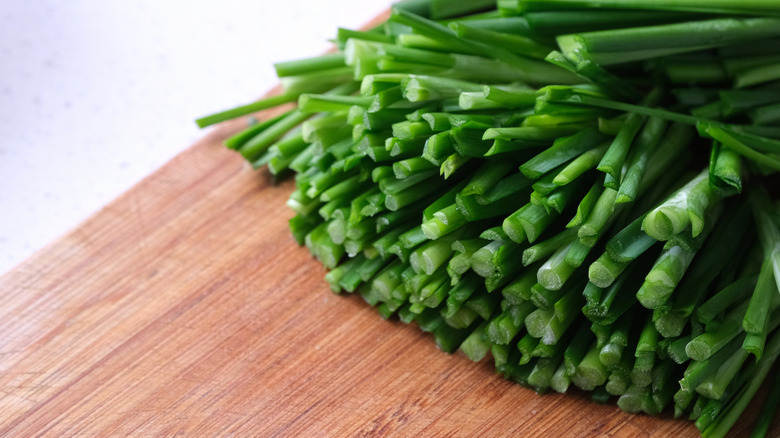What Is Russian Egg Salad And What Makes It So Delicious?
There are a lot of egg salads around the world, and chances are that you haven't tried many of them. From Turkish-style egg salad adorned with parsley and red pepper flakes to Jamaican egg salad spiced with curry powder, this dish is endlessly versatile. Our favorite way to make and serve it, though, has to be in the Russian style. Russian egg salad, also known as Olivier salad, is a symphony of different flavors. The stars of the show are eggs, of course, but mixed in with those are pillowy potatoes, crunchy vegetables, sprightly pickles, and meaty components like ham or sausage. It's all held together by mayonnaise to make a totally delicious dish.
Russian egg salad is so specific, and its flavor so distinctive (yet totally familiar at the same time), that it's got a lot of people wondering where it comes from. Sure, we know it's from Russia, but how did it develop? What's the deal with its unique combination of ingredients, and why do they work together so well? Plus, how do you serve this variation of egg salad to keep it the best it can be? Don't worry, folks — we've got everything you need to know.
Russian egg salad, also known as Salad Olivier, was invented by a chef who trained in France
Russian egg salad is Russian — the clue's in the name, guys. However, you might be interested to hear that it was invented by someone who had learned his craft elsewhere. Russian egg salad was the brainchild of Lucien Olivier, a chef who in the 1860s was working at The Hermitage, a legendary restaurant in Moscow. Olivier had learned the ropes cooking in kitchens in Paris, and he brought this craft to Russia, where he worked to create classic dishes that would please the clientele visiting his restaurant.
Russian egg salad was born out of this impulse. Olivier set about creating a new salad that worked with seasonal ingredients, and came up with the original version of the Russian egg salad (which was also known as Salad Olivier). Interestingly, the first versions of the Russian egg salad didn't contain any eggs, and were instead a combination of various different meats, caviar, and capers, all held together with olive oil. Over time, though, other chefs picked up his recipe and ran with it, and it wasn't long before eggs were a central ingredient, with other additions becoming simpler and easier to find.
Russian egg salad is a New Year's tradition
Russian egg salad can be eaten any time of the year and it'll still be delicious. In Russia, though, it plays a vital role in New Year's celebrations. This salad often makes its way onto New Year's tables and is frequently served as part of zakuski, an assembly of food consisting of small bites and plates that was originally served to weary travelers coming in off the long road. Zakuski dishes like Russian egg salad are designed to be fairly substantial, with the fatty mayonnaise of the salad helping to soak up any vodka that's drunk alongside the meal.
Thanks to the multicolored appearance of Russian egg salad, with its vivid assembly of ingredients, it's a real showstopper at New Year's. It also gives home cooks an opportunity to vary their serving style. Some people may choose to stick with serving Russian egg salad in a bowl, or others may pile it into rolls and serve it as a sandwich. The only limit is the chef's imagination, and the only constant is that people will enjoy it every single time.
The pickles in Russian egg salad add a vital pop of acidity
Eggs may be the key feature of Russian egg salad, but they're not the ingredient that adds the most flavor. Instead, that distinction goes to pickles. Pickles provide an acidic element to the salad, imbuing it with some much-needed tanginess. This tanginess is especially important as several of the key players in Russian egg salad, like potatoes and eggs, have a fairly neutral flavor and can make things too heavy if they're not brightened up. Because they're preserved, they can add that brightness without having to be fresh, and they're perfect for storing through long, dark Russian winters.
Pickles also have an intensifying effect on any umami-rich ingredients in the dish, like cubed sausage or ham. The pickles and their juice somehow deepen these tastes, making everything taste meatier and more complex. Texturally, they add a gentle crunchiness to the salad that gives way to a delectable squishiness partway through each bite. This two-tone texture allows them to bridge the gap between the harder ingredients (like carrots) and the softer ones (like eggs).
Canned peas provide a pop of sweetness
Most salads have at least a little greenery somewhere. In Russian egg salads, though, this greenery comes from a slightly surprising source. Russian egg salads commonly use peas in their recipes — and instead of going for fresh or frozen ones, they usually use the canned version. While the exact reason behind using canned peas instead of fresh ones is unclear, opting for the canned variety makes this salad way more accessible, especially at times of the year where fresh peas might be scarce. There's no need to go hunting in your grocery store: Just grab a can of peas, drain them, and throw them in.
Plus, there's no need to worry about taste, guys. Canned peas still have a lovely sweet flavor that gives the salad a lightly sugary note without having to rely on more intense sweeteners. They also retain their texture well when canned, which gives every pea a nice snappiness. Admittedly, canned peas can sometimes suffer from having a canned taste, but giving them a quick blanch can help to remove this. Remember, too, that you can always use fresh or frozen peas if you have them to hand.
Cubed sausage (or ham) adds a slight richness to Russian egg salad
When Russian egg salad is served at a party or as zakuski, its role is to offer a flavorful counterpoint to sharp drinks like vodka while also lining the stomach. To do that, it needs to have a certain richness to it, and that's provided by meats like sausage or ham. Cubed sausage is commonplace in traditional Russian egg salad recipes, and it gives the salad a savory taste and a richer overall flavor profile. Its fatty, salty notes help to flavor the salad and strengthen the other ingredients, and its fat and protein content help to make the dish more filling.
When using sausage in Russian egg salad, it's customary to prepare it pretty specifically. Sausages are usually boiled, instead of being browned in a pan with fat. This gives the sausages a slightly lighter taste and stops them from dominating everything else in the meal. If you don't have sausage, cubed ham can be used as a substitute, as it provides many of the same flavor notes (as well as a similar color). These are far from the only meats you can opt for, though: Versions out there exist with basically every type of protein, from beef, to chicken, to even squid.
The mayonnaise in Russian egg salad is often spiked with dill weed, adding a fresh flavor to the dish
With any protein-based, mayonnaise-dressed salad out there, the main challenge is often to find ways to freshen things up. In Russian egg salad, that freshness is delivered most powerfully by a tiny yet mighty herb: Dill weed. Dill weed brings a bright, grassy flavor to the salad which helps to cut through the richer notes, giving the dish way more vibrancy. It's particularly helpful if your Russian egg salad is a little over-salty, or if you've misjudged the ratio of fresh ingredients and vegetables to meat, potatoes, and eggs.
Dill weed also has a subtle aniseed note that gives a further layer to the salad's flavors. Importantly, dill weed and dill aren't exactly the same thing, and it can be easy to confuse them. Dill weed refers to the grassy fronds of the plant, which have that fresh and sprightly flavor. Dill, on the other hand, can refer to the other parts of the plant, including its seeds and stems. These parts will add a more powerful flavor to the salad that threatens to overwhelm it. Where possible, you should go for fresh dill. While you can use the dried version, it won't have quite the same effect.
Potatoes provide a neutral base in the salad
Russian egg salad, or Salad Olivier, is notably different from a classic potato salad. However, on first glance, you'd be forgiven for being unable to tell the difference. Both salads have similar ingredients, are prepared in a similar way, and are served in the same kinds of settings. In Russian egg salad, though, potatoes aren't the main event. Instead, they work as a cushion for all the other flavors, adding an earthy note that sits underneath all of the sharper flavors. Their neutral taste helps to pull back the stronger ingredients in the dish, like the sausages and pickles, preventing them from making things taste too salty.
As with potato salads, choosing the right potatoes for your Russian egg salad is crucial. Many people opt for the traditional choice of new potatoes, which have a waxy texture that allows them to keep their shape when they're cooked. This stops them from disintegrating when they're mixed into the salad with your other ingredients. If you can't find a waxy potato, going for a variety like Yukon Gold is a good option, as they hold their shape well (although they will be a little softer). While you can use starchy potatoes, you need to be a lot more careful not to overcook them, and they won't have the same bite.
Dijon mustard brings a warm heat
Salads with mayonnaise-based dressings usually benefit from a pop of heat, which cuts through the mayo's density and makes everything taste a little lighter and brighter. While hot sauce or chili flakes can be used in regular potato or egg salads, with Russian egg salad, Dijon mustard is the go-to ingredient for a touch of fire. One of the most flavorful mustard varieties out there, Dijon mustard has a spicy warmth that slowly develops in your mouth and sinuses, and a tartness that adds a liveliness to the salad, working against the dense potatoes and eggs. It gets its complex flavor from the use of white wine in its recipes, which adds an extra layer of flavor.
Importantly, Dijon mustard brands can vary considerably in their spice levels. Some may have a milder taste, whereas others will be incredibly hot and threaten to overwhelm the other flavors in your egg salad. That's why you should start small. Add a tiny bit to start, stirring it through thoroughly and allowing its flavors to meld with all the others in the dish. If you find that you can barely notice it, add a little more, taste, and repeat.
Carrots deliver sweetness and crunch
Without sweetness, Russian egg salad kinda suffers. This salad isn't meant to be sweet by any means, but a touch of sugary flavor running underneath the savory ingredients helps to intensify the whole dish, making everything taste more vibrant and rich. Unlike other egg or potato salads, though, Russian egg salad doesn't get its sweetness from sugar. Instead it gets it from natural sources, with carrots playing a key role in providing natural sweetness — and a satisfying crunch, too.
The sweetness that carrots bring to the table (which is also contributed to by the peas in the dish) is subtle, but definitely noticeable. Given that carrots are sweeter in the winter thanks to their reaction to frosty conditions, it's fair to assume that these vegetables were especially valuable during Russian winters to provide a sugary note, which is undercut with their earthiness and slight nuttiness. Their crunch, meanwhile, helps to stop the salad from becoming too mushy and gives your teeth something to chomp through.
Instead of ham, some Russian egg salads use fish
Russian egg salads are exceptionally filling, thanks to the amount of protein in them. While that protein always comes from eggs and usually comes from meat, the latter can be swapped out in favor of fish. Opting for fish instead of ham, sausage, or any other meat is not just a great option for pescatarians — it can also lead to a lighter-tasting salad. Instead of the intense umami and richness that cured meat provides, your egg salad will be filled with a light brininess. As you want your fish to hold its own against the other ingredients, it's a good idea to go for a robust-tasting option like salmon or salted trout. If you want it to really stand out, opt for a smoked fish.
Other types of seafood can also be used in Russian egg salad. In fact, early recipes included crawfish, alongside other less common ingredients like grouse, which points towards the sheer versatility of this dish. You can still use crawfish today, or go for some sautéed shrimp layered elegantly on top of the salad. Alternatively, chop your shrimp into small pieces and mix them through to imbue it with a subtle meatiness and a gentle touch of salt.
There are countless varieties of Russian egg salad out there
Russian egg salad has a few ingredients that you really can't make it without, and it's unlikely that you'll find recipes that don't have eggs, mayonnaise, potatoes, and green peas in them somewhere. Once you get past these core four additions, though, the possibilities are endless. Throughout the years, Russian egg salad has been made in countless different ways, and today virtually every chef out there has their own spin on it. Some people like to mix up which meat they add, going for lamb, pork, or smoked options instead of sausage or ham. Others like to amp up the sweetness of the salad by adding apples or other fruits, bell peppers, or beets. Crunch-wise, you can throw in nuts or celery, and for a little extra mush you can pop in beans. Feel free to experiment: The salad can take it.
With that being said, it's vital to think about your overall flavor profile. One key mistake people make is to add ingredients that work against the inherent gentleness of the salad, by throwing in things with too much spice or acidity. As such, we'd recommend taking it easy on the caper brine or kimchi, and not throwing in handfuls of chili flakes. Just like with a classic egg salad, you want this dish to be comforting, not challenging to eat.
Russian egg salad is served simply, with an herb garnish
When Russian egg salad is on the table, it should reflect its homely and wholesome nature. While you can certainly serve it in an elegant manner, we personally think it shines best when things are kept simple. So don't be afraid to pile it high in a bowl and plonk it in the middle of your table. Make sure you only do this after you've given the ingredients time to meld together by chilling it in the fridge, so that their flavors smooth out and combine.
Russian egg salad can be eaten as a side with grilled meats or fish, or it can be dolloped onto rye bread and chomped down as an open-faced sandwich. Alternatively, serve it with crackers and crudités, and allow your guests to dip to their hearts' content. As for garnishing your Russian egg salad, fresh herbs work best. A few fronds of dill can complement the dill weed you've already mixed into the mayonnaise, or chopped parsley can give your salad an earthy, slightly peppery finishing touch. Alternatively, for a gentle hint of onion, you can snip over some chives. An herb garnish won't just add flavor, either: It'll also give your salad a pleasing pop of greenery that'll make it so much more appealing to the eye.
